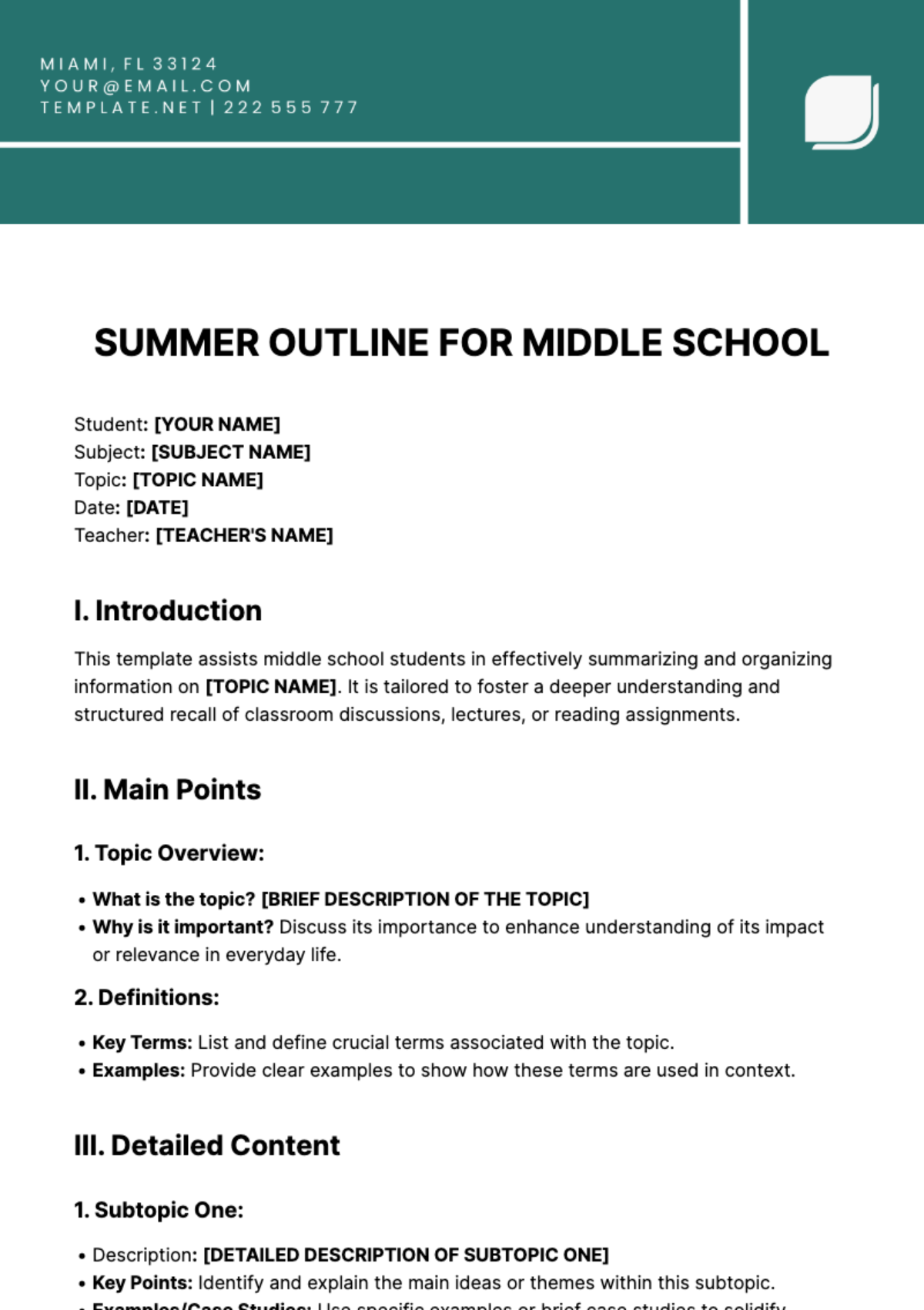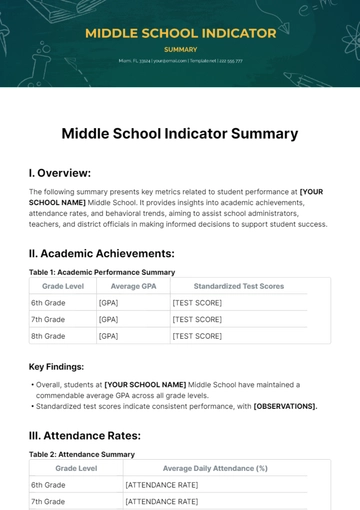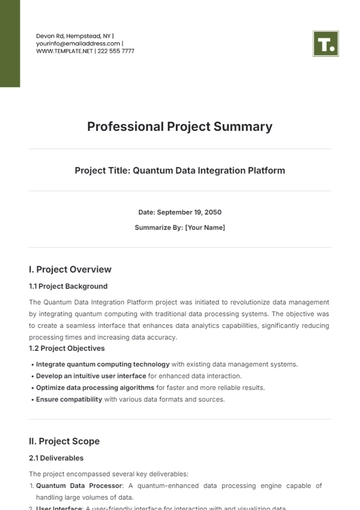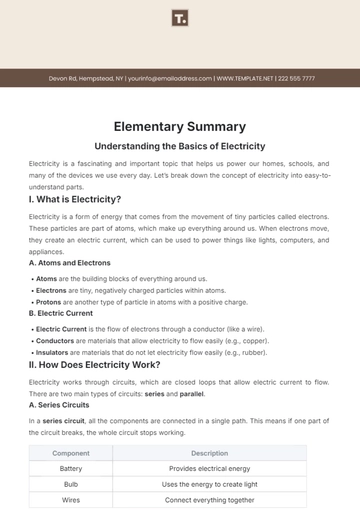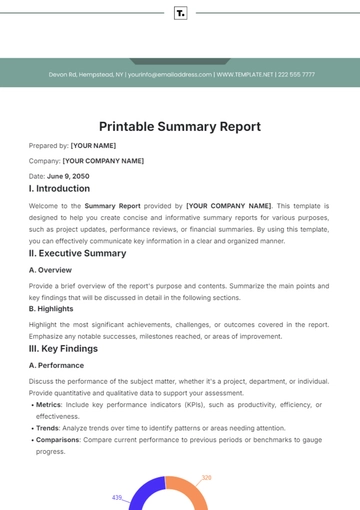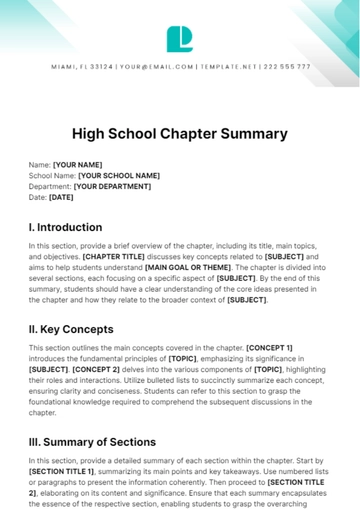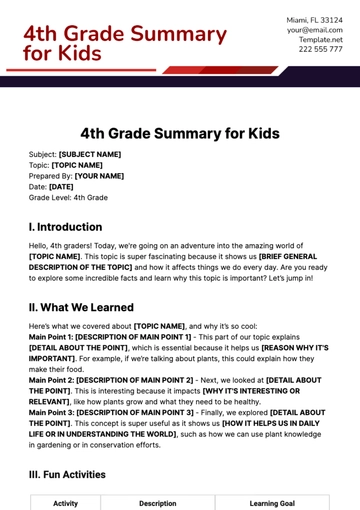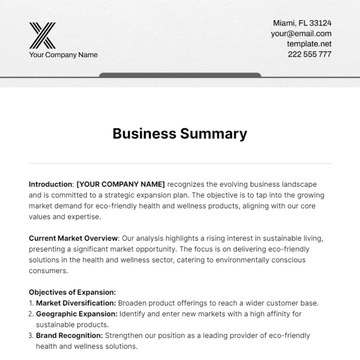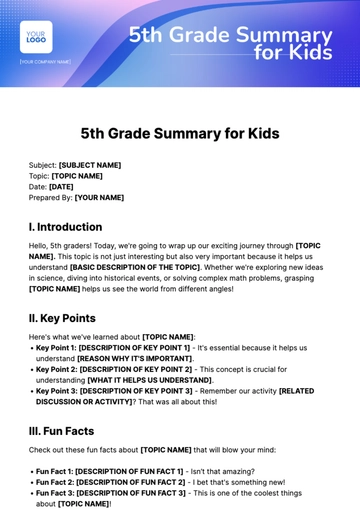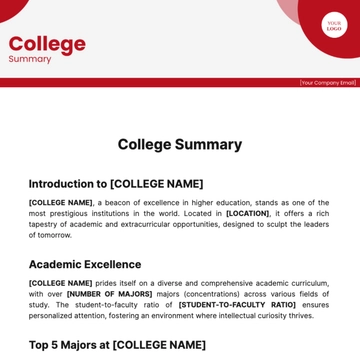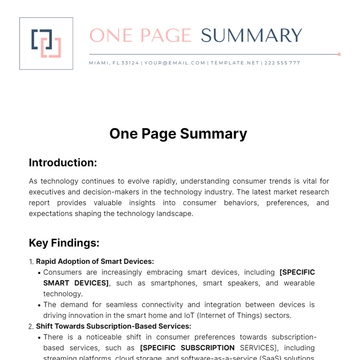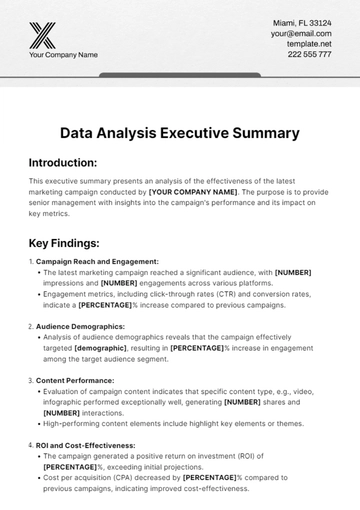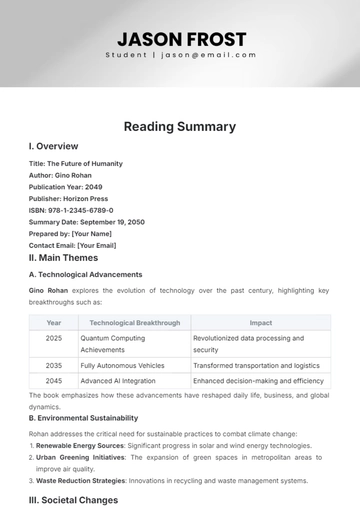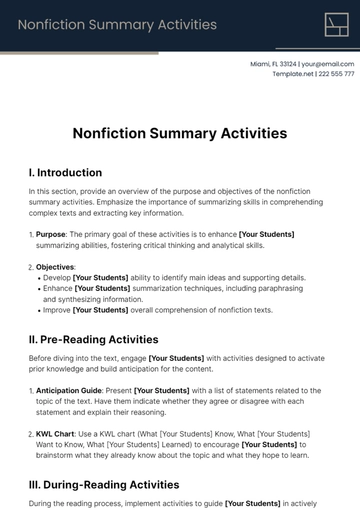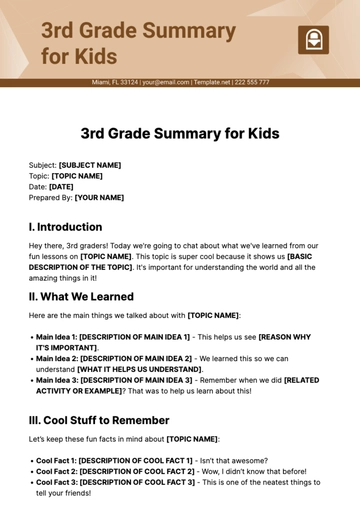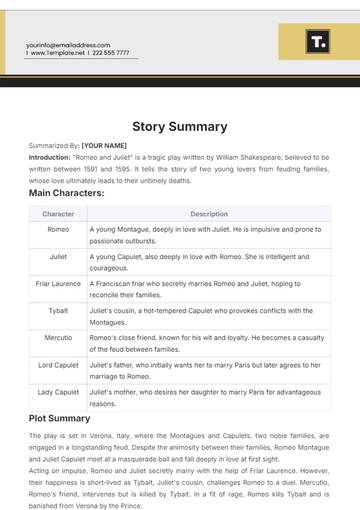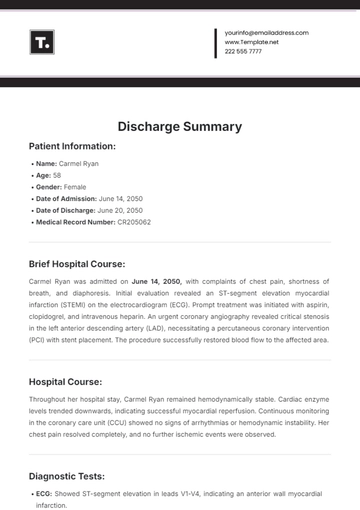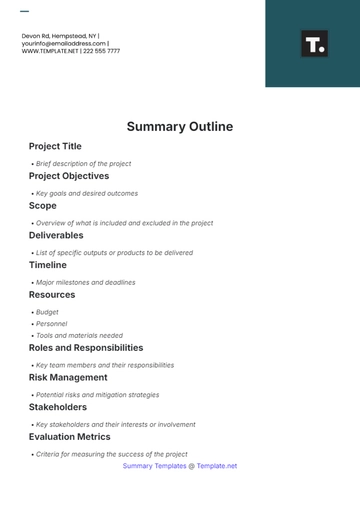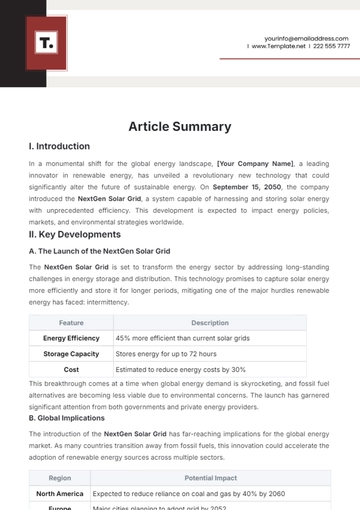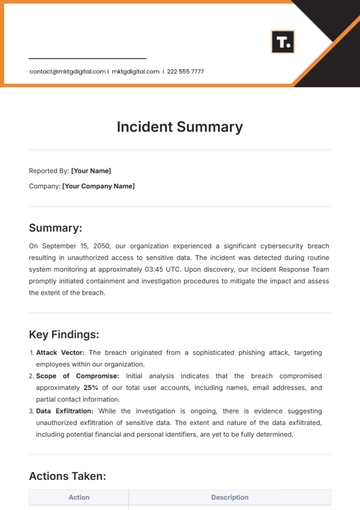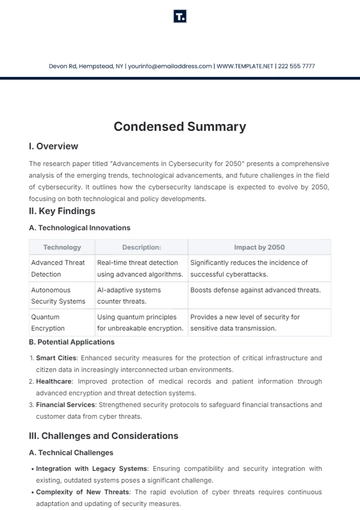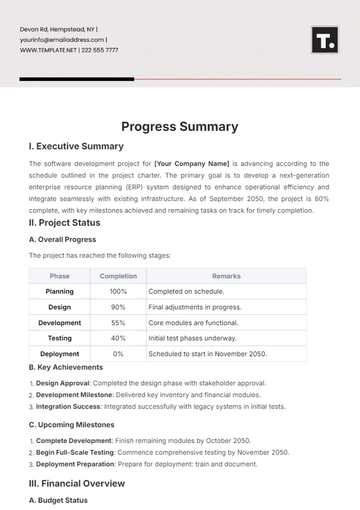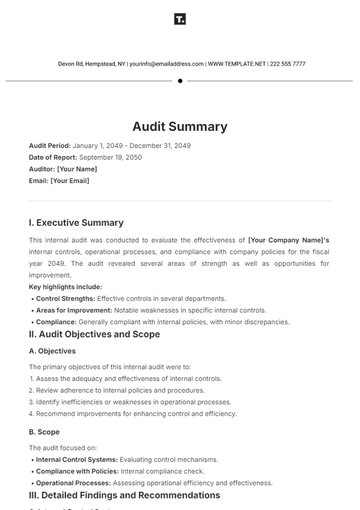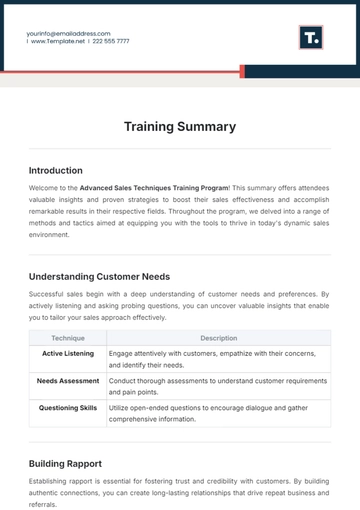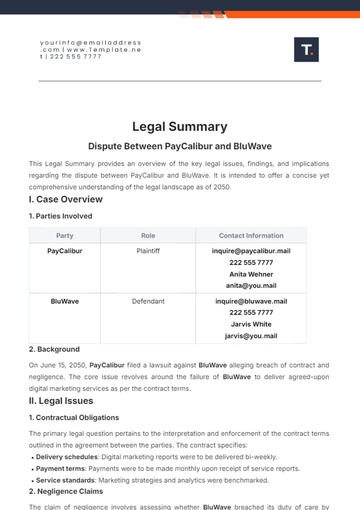SUMMER OUTLINE FOR MIDDLE SCHOOL
Student: [YOUR NAME]
Subject: [SUBJECT NAME]
Topic: [TOPIC NAME]
Date: [DATE]
Teacher: [TEACHER'S NAME]
I. Introduction
This template assists middle school students in effectively summarizing and organizing information on [TOPIC NAME]. It is tailored to foster a deeper understanding and structured recall of classroom discussions, lectures, or reading assignments.
II. Main Points
1. Topic Overview:
2. Definitions:
III. Detailed Content
1. Subtopic One:
Description: [DETAILED DESCRIPTION OF SUBTOPIC ONE]
Key Points: Identify and explain the main ideas or themes within this subtopic.
Examples/Case Studies: Use specific examples or brief case studies to solidify understanding.
2. Subtopic Two:
Description: [DETAILED DESCRIPTION OF SUBTOPIC TWO]
Key Points: Discuss significant points or theories covered.
Examples/Case Studies: Apply practical examples to enhance comprehension.
3. Subtopic Three:
Description: [DETAILED DESCRIPTION OF SUBTOPIC THREE]
Key Points: Outline and elaborate on essential concepts or arguments.
Examples/Case Studies: Illustrate with relatable examples for better engagement.
IV. Connections to Other Subjects
V. Visual Aids
Charts and Graphs: Include any charts or graphs that help visualize data or concepts from the topic.
Diagrams: Use diagrams to illustrate complex processes or relationships.
Images: Add relevant images to provide visual context or enhance understanding.
VI. Critical Thinking Questions
Question 1: [THOUGHT-PROVOKING QUESTION RELATED TO THE TOPIC]
Question 2: [ANOTHER RELEVANT QUESTION]
Purpose of Questions: These are designed to encourage deeper inquiry and critical analysis of the topic.
VII. Practical Applications
Real-World Application: How can the knowledge gained from this topic be applied in everyday life or observed in the world around us?
Future Implications: Consider potential future developments related to the topic and their possible impacts.
VIII. Summary and Conclusion
Key Takeaways: Recap the most important points from the summary.
Personal Insights: Reflect on what was learned and how it changed your perspective on the topic.
Suggestions for Further Study: Identify areas where additional information or research could expand understanding or offer new insights.
Summary Templates @ Template.net
